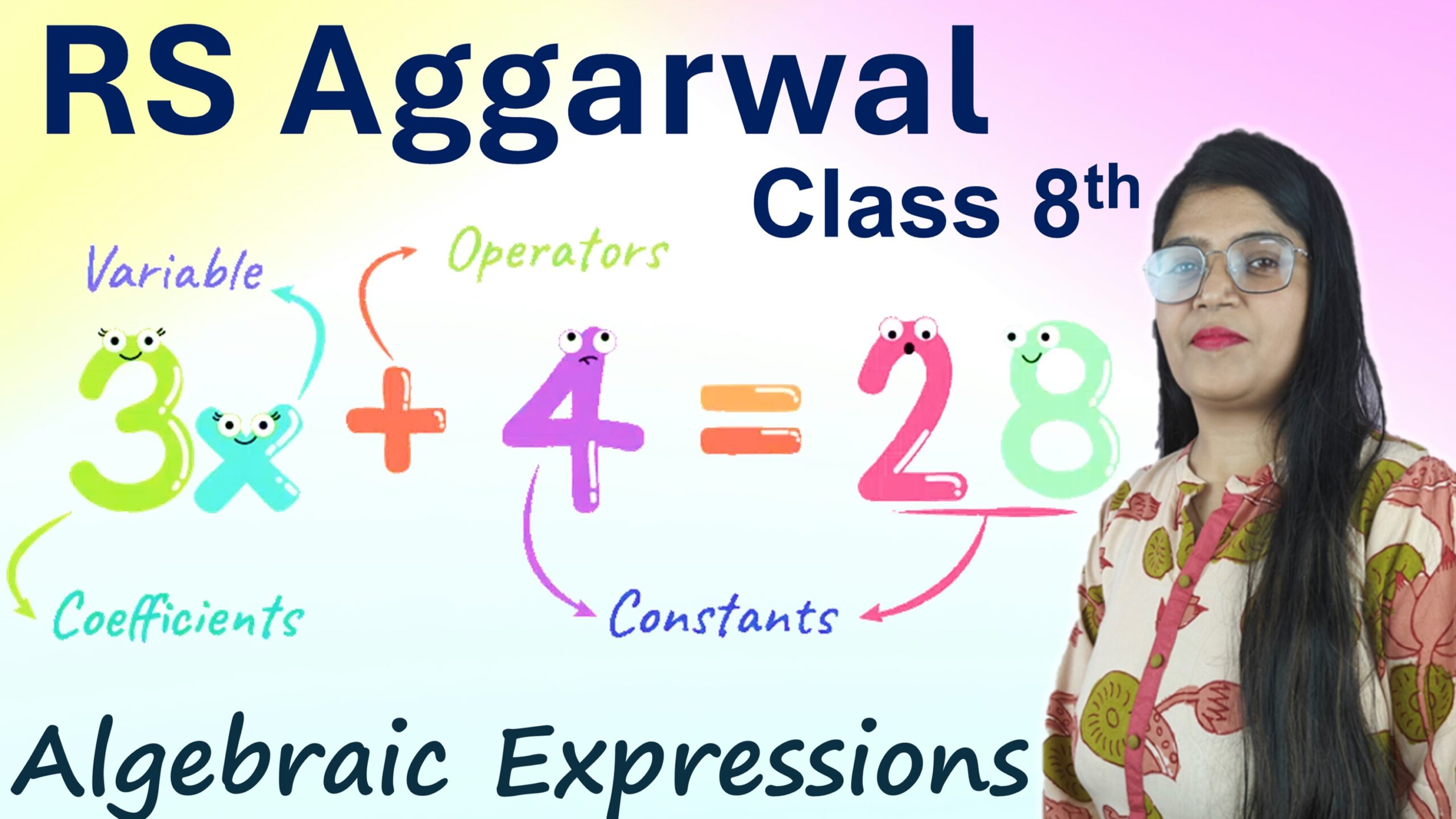Exercise: 2-D
Q1: Evaluate:
i. \(\frac{5}{4} \times \frac{3}{7}\)
Multiplying the numerators and the denominators:
\[
\frac{5 \times 3}{4 \times 7} = \frac{15}{28}
\]
Simplified:
\[
\frac{15}{28}
\]
Answer:\(\frac{15}{28}\)
ii. \(\frac{2}{3} \times -\frac{6}{7}\)
Multiplying the numerators and the denominators:
\[
\frac{2 \times -6}{3 \times 7} = \frac{-12}{21}
\]
Simplified:
\[
\frac{-4}{7}
\]
Answer:\(\frac{-4}{7}\)
iii. \(\left(\frac{-12}{5}\right) \times \left(\frac{10}{-3}\right)\)
Multiplying the numerators and the denominators:
\[
\frac{-12 \times 10}{5 \times -3} = \frac{-120}{-15} = 8
\]
Answer:8
iv. \(-\frac{45}{39} \times \frac{-13}{15}\)
Multiplying the numerators and the denominators:
\[
\frac{-45 \times -13}{39 \times 15} = \frac{585}{585} = 1
\]
Answer:1
v. \(3\frac{1}{8} \times \left(-2\frac{2}{5}\right)\)
Convert the mixed numbers to improper fractions:
\[
3\frac{1}{8} = \frac{25}{8}, \quad -2\frac{2}{5} = -\frac{12}{5}
\]
Now, multiply:
\[
\frac{25}{8} \times -\frac{12}{5} = \frac{25 \times -12}{8 \times 5} = \frac{-300}{40} = -\frac{15}{2}
\]
Answer:\(-\frac{15}{2}\)
vi. \(2\frac{14}{25} \times \left(\frac{-5}{16}\right)\)
Convert the mixed number to an improper fraction:
\[
2\frac{14}{25} = \frac{64}{25}
\]
Now, multiply:
\[
\frac{64}{25} \times \frac{-5}{16} = \frac{64 \times -5}{25 \times 16} = \frac{-320}{400} = \frac{-4}{5}
\]
Answer:\(\frac{-4}{5}\)
vii. \(\left(\frac{-8}{9}\right) \times \left(\frac{-3}{16}\right)\)
Multiplying the numerators and the denominators:
\[
\frac{-8 \times -3}{9 \times 16} = \frac{24}{144} = \frac{1}{6}
\]
Answer:\(\frac{1}{6}\)
viii. \(\left(\frac{5}{-27}\right) \times \left(\frac{-9}{20}\right)\)
Multiplying the numerators and the denominators:
\[
\frac{5 \times -9}{-27 \times 20} = \frac{-45}{-540} = \frac{1}{12}
\]
Answer:\(\frac{1}{12}\)
Q2: Multiply:
i. \(\frac{3}{25} \text{ and } \frac{4}{5}\)
Multiplying the numerators and the denominators:
\[
\frac{3 \times 4}{25 \times 5} = \frac{12}{125}
\]
Answer:\(\frac{12}{125}\)
ii. \(1\frac{1}{8} \text{ and } 10\frac{2}{3}\)
Convert the mixed numbers to improper fractions:
\[
1\frac{1}{8} = \frac{9}{8}, \quad 10\frac{2}{3} = \frac{32}{3}
\]
Now, multiply:
\[
\frac{9}{8} \times \frac{32}{3} = \frac{9 \times 32}{8 \times 3} = \frac{288}{24} = 12
\]
Answer:12
iii. \(6\frac{2}{3} \text{ and } \frac{-3}{8}\)
Convert the mixed number to an improper fraction:
\[
6\frac{2}{3} = \frac{20}{3}
\]
Now, multiply:
\[
\frac{20}{3} \times \frac{-3}{8} = \frac{20 \times -3}{3 \times 8} = \frac{-60}{24} = \frac{-5}{2}
\]
Answer:\(\frac{-5}{2}\)
iv. \(\frac{-13}{15} \text{ and } \frac{-25}{26}\)
Multiplying the numerators and the denominators:
\[
\frac{-13 \times -25}{15 \times 26} = \frac{325}{390}
\]
Simplified:
\[
\frac{325}{390} = \frac{5}{6}
\]
Answer:\(\frac{5}{6}\)
v. \(1\frac{1}{6} \text{ and } 18\)
Convert the mixed number to an improper fraction:
\[
1\frac{1}{6} = \frac{7}{6}
\]
Now, multiply:
\[
\frac{7}{6} \times 18 = \frac{7 \times 18}{6} = \frac{126}{6} = 21
\]
Answer:21
vi. \(2\frac{1}{14} \text{ and } -7\)
Convert the mixed number to an improper fraction:
\[
2\frac{1}{14} = \frac{29}{14}
\]
Now, multiply:
\[
\frac{29}{14} \times -7 = \frac{29 \times -7}{14} = \frac{-203}{14} = -\frac{29}{2}
\]
Answer:\(-\frac{29}{2}\)
vii. \(5\frac{1}{8} \text{ and } -16\)
Convert the mixed number to an improper fraction:
\[
5\frac{1}{8} = \frac{41}{8}
\]
Now, multiply:
\[
\frac{41}{8} \times -16 = \frac{41 \times -16}{8} = \frac{-656}{8} = -82
\]
Answer:-82
viii. \(35 \text{ and } \frac{-18}{25}\)
Multiplying the numerators and the denominators:
\[
35 \times \frac{-18}{25} = \frac{35 \times -18}{25} = \frac{-630}{25} = \frac{-126}{5}
\]
Answer:\(\frac{-126}{5}\)
ix. \(6\frac{2}{3} \text{ and } -\frac{3}{8}\)
Convert the mixed number to an improper fraction:
\[
6\frac{2}{3} = \frac{20}{3}
\]
Now, multiply:
\[
\frac{20}{3} \times -\frac{3}{8} = \frac{20 \times -3}{3 \times 8} = \frac{-60}{24} = \frac{-5}{2}
\]
Answer:\(\frac{-5}{2}\)
x. \(3\frac{3}{5} \text{ and } -10\)
Convert the mixed number to an improper fraction:
\[
3\frac{3}{5} = \frac{18}{5}
\]
Now, multiply:
\[
\frac{18}{5} \times -10 = \frac{18 \times -10}{5} = \frac{-180}{5} = -36
\]
Answer:-36
xi. \(\frac{27}{28} \text{ and } -14\)
Multiplying the numerators and the denominators:
\[
\frac{27}{28} \times -14 = \frac{27 \times -14}{28} = \frac{-378}{28} = -\frac{27}{2}
\]
Answer:\(-\frac{27}{2}\)
xii. \(-24 \text{ and } \frac{5}{16}\)
Multiplying the numerators and the denominators:
\[
-24 \times \frac{5}{16} = \frac{-24 \times 5}{16} = \frac{-120}{16} = \frac{-15}{2}
\]
Answer:\(-\frac{15}{2}\)
Q3: Evaluate:
i. \(\left(-6\times\frac{5}{18}\right)-\left(-4\frac{2}{9}\right)\)
First, perform the multiplication:
\[
-6 \times \frac{5}{18} = \frac{-30}{18} = \frac{-5}{3}
\]
Now, convert the mixed number:
\[
-4\frac{2}{9} = -\frac{38}{9}
\]
Now subtract:
\[
\frac{-5}{3} – \left(-\frac{38}{9}\right) = \frac{-5}{3} + \frac{38}{9}
\]
To add these fractions, find the LCM of 3 and 9, which is 9:
\[
\frac{-5}{3} = \frac{-15}{9}
\]
Now, add the fractions:
\[
\frac{-15}{9} + \frac{38}{9} = \frac{23}{9}
\]
Answer:\(\frac{23}{9}\)
ii. \(\left(\frac{7}{8}\times\frac{8}{7}\right)+\left(\frac{-5}{9}\right)\times\left(\frac{6}{-25}\right)\)
First, multiply \(\frac{7}{8} \times \frac{8}{7}\):
\[
\frac{7}{8} \times \frac{8}{7} = 1
\]
Next, multiply \(\frac{-5}{9} \times \frac{6}{-25}\):
\[
\frac{-5}{9} \times \frac{6}{-25} = \frac{-5 \times 6}{9 \times -25} = \frac{-30}{-225} = \frac{2}{15}
\]
Now, add the results:
\[
1 + \frac{2}{15} = \frac{15}{15} + \frac{2}{15} = \frac{17}{15}
\]
Answer:\(\frac{17}{15}\)
iii. \(\left(\frac{11}{-9}\times\frac{21}{44}\right)+\left(\frac{-5}{9}\right)\times\left(\frac{63}{-100}\right)\)
First, multiply \(\frac{11}{-9} \times \frac{21}{44}\):
\[
\frac{11}{-9} \times \frac{21}{44} = \frac{11 \times 21}{-9 \times 44} = \frac{231}{-396} = \frac{-7}{12}
\]
Next, multiply \(\frac{-5}{9} \times \frac{63}{-100}\):
\[
\frac{-5}{9} \times \frac{63}{-100} = \frac{-5 \times 63}{9 \times -100} = \frac{-315}{-900} = \frac{7}{20}
\]
Now, add the results:
\[
\frac{-7}{12} + \frac{7}{20}
\]
To add these fractions, find the LCM of 18 and 20, which is 180:
\[
\frac{-7}{12} = \frac{-35}{60}, \quad \frac{7}{20} = \frac{21}{60}
\]
Now, add the fractions:
\[
\frac{-35}{60} + \frac{21}{60} = \frac{-14}{60} = \frac{-7}{30}
\]
Answer:\(\frac{-7}{30}\)
iv. \(\left(\frac{-5}{9}\times\frac{6}{-25}\right)+\left(\frac{24}{21}\times\frac{7}{8}\right)\)
First, multiply \(\frac{-5}{9} \times \frac{6}{-25}\):
\[
\frac{-5}{9} \times \frac{6}{-25} = \frac{-5 \times 6}{9 \times -25} = \frac{-30}{-225} = \frac{2}{15}
\]
Next, multiply \(\frac{24}{21} \times \frac{7}{8}\):
\[
\frac{24}{21} \times \frac{7}{8} = \frac{24 \times 7}{21 \times 8} = \frac{168}{168} = 1
\]
Now, add the results:
\[
\frac{2}{15} + 1 = \frac{2}{15} + \frac{15}{15} = \frac{17}{15}
\]
Answer:\(\frac{17}{15}\)
v. \(\left(\frac{-35}{39}\times\frac{-13}{7}\right)-\left(\frac{7}{90}\times\frac{-18}{14}\right)\)
First, multiply \(\frac{-35}{39} \times \frac{-13}{7}\):
\[
\frac{-35}{39} \times \frac{-13}{7} = \frac{35 \times 13}{39 \times 7} = \frac{455}{273} = \frac{5}{3}
\]
Next, multiply \(\frac{7}{90} \times \frac{-18}{14}\):
\[
\frac{7}{90} \times \frac{-18}{14} = \frac{7 \times -18}{90 \times 14} = \frac{-126}{1260} = \frac{-1}{10}
\]
Now, subtract:
\[
\frac{5}{3} – \left(\frac{-1}{10}\right) = \frac{5}{3} + \frac{1}{10}
\]
To add these fractions, find the LCM of 3 and 10, which is 30:
\[
\frac{5}{3} = \frac{50}{30}, \quad \frac{1}{10} = \frac{3}{30}
\]
Now, add the fractions:
\[
\frac{50}{30} + \frac{3}{30} = \frac{53}{30}
\]
Answer:\(\frac{53}{30}\)
vi. \(\left(\frac{-4}{5}\times\frac{3}{2}\right)+\left(\frac{9}{-5}\times\frac{10}{3}\right)-\left(\frac{-3}{2}\times\frac{-1}{4}\right)\)
First, multiply \(\frac{-4}{5} \times \frac{3}{2}\):
\[
\frac{-4}{5} \times \frac{3}{2} = \frac{-12}{10} = \frac{-6}{5}
\]
Next, multiply \(\frac{9}{-5} \times \frac{10}{3}\):
\[
\frac{9}{-5} \times \frac{10}{3} = \frac{90}{-15} = -6
\]
Next, multiply \(\frac{-3}{2} \times \frac{-1}{4}\):
\[
\frac{-3}{2} \times \frac{-1}{4} = \frac{3}{8}
\]
Now, add the results:
\[
\frac{-6}{5} + (-6) – \frac{3}{8}
\]
First, express \(-6\) as \(\frac{-30}{5}\) and find a common denominator of 40:
\[
\frac{-6}{5} = \frac{-48}{40}, \quad -6 = \frac{-240}{40}, \quad \frac{3}{8} = \frac{15}{40}
\]
Now, add the fractions:
\[
\frac{-48}{40} + \frac{-240}{40} – \frac{15}{40} = \frac{-303}{40}
\]
Answer:\(\frac{-303}{40}\)
Q4: Find the cost of \(3\frac{1}{2}\) m cloth, if one metre cloth costs ₹\(325\frac{1}{2}\).
To find the cost of \(3\frac{1}{2}\) meters of cloth, multiply the cost per meter by the length of cloth required.
First, express the mixed numbers as improper fractions:
\[
3\frac{1}{2} = \frac{7}{2}, \quad 325\frac{1}{2} = \frac{651}{2}
\]
Now, multiply the cost per meter by the length of cloth required:
\[
\frac{7}{2} \times \frac{651}{2} = \frac{7 \times 651}{2 \times 2} = \frac{4557}{4}
\]
Now, divide:
\[
\frac{4557}{4} = 1139\frac{1}{4}\ = 1139.25
\]
So, the cost of \(3\frac{1}{2}\) meters of cloth is ₹\(1139.25\).
Answer:₹1139.25
Q5. A bus is moving with a speed of \(65\frac{1}{2}\) km per hour. How much distance will it cover in \(1\frac{1}{3}\) hours?
To find the distance covered by the bus, use the formula:
\[
\text{Distance} = \text{Speed} \times \text{Time}
\]
First, express the mixed numbers as improper fractions:
\[
65\frac{1}{2} = \frac{131}{2}, \quad 1\frac{1}{3} = \frac{4}{3}
\]
Now, multiply the speed by the time:
\[
\frac{131}{2} \times \frac{4}{3} = \frac{131 \times 4}{2 \times 3} = \frac{524}{6} = 87\frac{1}{3}\ = 87.33 \text{ km}
\]
So, the distance covered by the bus in \(1\frac{1}{3}\) hours is \(87.33\) km.
Answer:87.33 km
Q6: Divide
i. \(\frac{15}{28} \div \frac{3}{4}\)
To divide two fractions, multiply the first fraction by the reciprocal of the second:
\[
\frac{15}{28} \div \frac{3}{4} = \frac{15}{28} \times \frac{4}{3}
\]
Now, multiply the fractions:
\[
\frac{15 \times 4}{28 \times 3} = \frac{60}{84}
\]
Simplify the fraction:
\[
\frac{60}{84} = \frac{5}{7}
\]
So, the result is \(\frac{5}{7}\).
Answer:\(\frac{5}{7}\)
ii. \(\frac{-20}{9} \div \frac{-5}{9}\)
To divide, multiply the first fraction by the reciprocal of the second:
\[
\frac{-20}{9} \div \frac{-5}{9} = \frac{-20}{9} \times \frac{9}{-5}
\]
Now, multiply the fractions:
\[
\frac{-20 \times 9}{9 \times -5} = \frac{-180}{-45} = 4
\]
So, the result is \(4\).
Answer:4
iii. \(\frac{16}{-5} \div \frac{-8}{7}\)
To divide, multiply the first fraction by the reciprocal of the second:
\[
\frac{16}{-5} \div \frac{-8}{7} = \frac{16}{-5} \times \frac{7}{-8}
\]
Now, multiply the fractions:
\[
\frac{16 \times 7}{-5 \times -8} = \frac{112}{40} = \frac{28}{10} = \frac{14}{5}
\]
So, the result is \(\frac{14}{5}\).
Answer:\(\frac{14}{5}\)
iv. \(-7 \div \frac{-14}{5}\)
To divide, multiply by the reciprocal of the second fraction:
\[
-7 \div \frac{-14}{5} = -7 \times \frac{5}{-14}
\]
Now, multiply the fractions:
\[
\frac{-7 \times 5}{-14} = \frac{-35}{-14} = 2.5
\]
So, the result is \(2.5\).
Answer:2.5
v. \(-14 \div \frac{7}{-2}\)
To divide, multiply by the reciprocal of the second fraction:
\[
-14 \div \frac{7}{-2} = -14 \times \frac{-2}{7}
\]
Now, multiply the fractions:
\[
\frac{-14 \times -2}{7} = \frac{28}{7} = 4
\]
So, the result is \(4\).
Answer:4
vi. \(\frac{-22}{9} \div \frac{11}{18}\)
To divide, multiply by the reciprocal of the second fraction:
\[
\frac{-22}{9} \div \frac{11}{18} = \frac{-22}{9} \times \frac{18}{11}
\]
Now, multiply the fractions:
\[
\frac{-22 \times 18}{9 \times 11} = \frac{-396}{99} = -4
\]
So, the result is \(-4\).
Answer:-4
vii. \(35 \div \frac{-7}{9}\)
To divide, multiply by the reciprocal of the second fraction:
\[
35 \div \frac{-7}{9} = 35 \times \frac{9}{-7}
\]
Now, multiply the fractions:
\[
\frac{35 \times 9}{-7} = \frac{315}{-7} = -45
\]
So, the result is \(-45\).
Answer:-45
viii. \(\frac{21}{44} \div -\frac{11}{9}\)
To divide, multiply by the reciprocal of the second fraction:
\[
\frac{21}{44} \div -\frac{11}{9} = \frac{21}{44} \times \frac{9}{-11}
\]
Now, multiply the fractions:
\[
\frac{21 \times 9}{44 \times -11} = \frac{189}{-484} = -\frac{189}{484}
\]
So, the result is \(-\frac{189}{484}\).
Answer:– \(-\frac{189}{484}\)
Q7: Evaluate
i. \(3\frac{5}{12} + 1\frac{2}{3}\)
To add mixed fractions, first convert them to improper fractions.
For \(3\frac{5}{12}\):
\[
3\frac{5}{12} = \frac{3 \times 12 + 5}{12} = \frac{36 + 5}{12} = \frac{41}{12}
\]
For \(1\frac{2}{3}\):
\[
1\frac{2}{3} = \frac{1 \times 3 + 2}{3} = \frac{3 + 2}{3} = \frac{5}{3}
\]
Now, find the LCM of the denominators 12 and 3, which is 12. Convert \(\frac{5}{3}\) to have a denominator of 12:
\[
\frac{5}{3} = \frac{5 \times 4}{3 \times 4} = \frac{20}{12}
\]
Now, add the two fractions:
\[
\frac{41}{12} + \frac{20}{12} = \frac{41 + 20}{12} = \frac{61}{12}
\]
Convert \(\frac{61}{12}\) back to a mixed fraction:
\[
\frac{61}{12} = 5\frac{1}{12}
\]
So, the result is \(5\frac{1}{12}\).
Answer:\(5\frac{1}{12}\)
ii. \(3\frac{5}{12} – 1\frac{2}{3}\)
To subtract mixed fractions, convert them to improper fractions first.
For \(3\frac{5}{12}\), we already have:
\[
3\frac{5}{12} = \frac{41}{12}
\]
For \(1\frac{2}{3}\), we already have:
\[
1\frac{2}{3} = \frac{5}{3}
\]
Find the LCM of the denominators 12 and 3, which is 12. Convert \(\frac{5}{3}\) to have a denominator of 12:
\[
\frac{5}{3} = \frac{20}{12}
\]
Now, subtract the fractions:
\[
\frac{41}{12} – \frac{20}{12} = \frac{41 – 20}{12} = \frac{21}{12}
\]
Simplify \(\frac{21}{12}\):
\[
\frac{21}{12} = 1\frac{9}{12} = 1\frac{3}{4}
\]
So, the result is \(1\frac{3}{4}\).
Answer:\(1\frac{3}{4}\)
iii. \(\left(3\frac{5}{12} + 1\frac{2}{3}\right) \div \left(3\frac{5}{12} – 1\frac{2}{3}\right)\)
We already know the results from the previous two parts:
\[
3\frac{5}{12} + 1\frac{2}{3} = 5\frac{1}{12} \quad \text{and} \quad 3\frac{5}{12} – 1\frac{2}{3} = 1\frac{3}{4}
\]
Now, divide the two results:
\[
5\frac{1}{12} \div 1\frac{3}{4}
\]
Convert both mixed fractions to improper fractions.
For \(5\frac{1}{12}\):
\[
5\frac{1}{12} = \frac{5 \times 12 + 1}{12} = \frac{60 + 1}{12} = \frac{61}{12}
\]
For \(1\frac{3}{4}\):
\[
1\frac{3}{4} = \frac{1 \times 4 + 3}{4} = \frac{4 + 3}{4} = \frac{7}{4}
\]
To divide, multiply by the reciprocal of the second fraction:
\[
\frac{61}{12} \div \frac{7}{4} = \frac{61}{12} \times \frac{4}{7}
\]
Now, multiply the fractions:
\[
\frac{61 \times 4}{12 \times 7} = \frac{244}{84}
\]
Simplify \(\frac{244}{84}\):
\[
\frac{244}{84} = \frac{61}{21}
\]
Convert \(\frac{61}{21}\) back to a mixed fraction:
\[
\frac{61}{21} = 2\frac{19}{21}
\]
So, the result is \(2\frac{19}{21}\).
Answer:\(2\frac{19}{21}\)
Q8: The product of two numbers is 14. If one Of the numbers is \(\frac{-8}{7}\) , find the other.
Let the unknown number be \(x\). The product of the two numbers is given by:
\[
\frac{-8}{7} \times x = 14
\]
To find \(x\), divide both sides of the equation by \(\frac{-8}{7}\):
\[
x = \frac{14}{\frac{-8}{7}} = 14 \times \frac{7}{-8} = \frac{98}{-8} = -\frac{49}{4}
\]
So, the other number is \(-\frac{49}{4}\).
Answer:\(-\frac{49}{4}\)
Q9: The cost of 11 pens is ₹\(24\frac{3}{4}\). Find the cost of one pen.
To find the cost of one pen, divide the total cost by the number of pens:
\[
24\frac{3}{4} = \frac{99}{4}, \quad \text{so the cost of one pen is} \quad \frac{99}{4} \div 11 = \frac{99}{4} \times \frac{1}{11} = \frac{99}{44} = \frac{9}{4} = 2\frac{1}{4}\
\]
So, the cost of one pen is ₹\(\frac{9}{4}\) or ₹2.25.
Answer:₹2.25
Q10: If 6 identical articles can be bought for ₹\(2\frac{6}{17}\). Find the cost of each article.
First, express the mixed number as an improper fraction:
\[
2\frac{6}{17} = \frac{40}{17}
\]
Now, divide the total cost by the number of articles to find the cost of each article:
\[
\frac{40}{17} \div 6 = \frac{40}{17} \times \frac{1}{6} = \frac{40}{102} = \frac{20}{51}
\]
So, the cost of each article is ₹\(\frac{20}{51}\).
Answer:₹\(\frac{20}{51}\)
Q11: By what number should \(\frac{-3}{8}\) be multiplied so that the product is \(\frac{-9}{16}\)?
Let the unknown number be \(x\). We need to solve for \(x\) in the equation:
\[
\frac{-3}{8} \times x = \frac{-9}{16}
\]
To find \(x\), divide both sides by \(\frac{-3}{8}\):
\[
x = \frac{-9}{16} \div \frac{-3}{8} = \frac{-9}{16} \times \frac{8}{-3} = \frac{72}{48} = \frac{3}{2}
\]
So, the required number is \(\frac{3}{2}\).
Answer:\(\frac{3}{2}\)
Q12: By what number should \(\frac{-5}{7}\) be divided so that the result is \(\frac{-15}{28}\)?
Let the unknown number be \(x\). We need to solve for \(x\) in the equation:
\[
\frac{-5}{7} \div x = \frac{-15}{28}
\]
To find \(x\), multiply both sides of the equation by \(x\) and solve for \(x\):
\[
x = \frac{-5}{7} \div \frac{-15}{28} = \frac{-5}{7} \times \frac{28}{-15} = \frac{-5 \times 28}{7 \times -15} = \frac{140}{105} = -\frac{4}{3}
\]
So, the required number is \(\frac{4}{3}\).
Answer:\(\frac{4}{3}\)
Q13: Evaluate: \(\left(\frac{32}{15}+\frac{8}{5}\right)\div\left(\frac{32}{15}-\frac{8}{5}\right)\).
\[
\left(\frac{32}{15}+\frac{8}{5}\right)\div\left(\frac{32}{15}-\frac{8}{5}\right)
\]Step 1: Solve inside the brackets
First, find the sum:
\[
\frac{32}{15} + \frac{8}{5}
\]
LCM of 15 and 5 is 15.
Convert \(\frac{8}{5}\) to have denominator 15:
\[
\frac{8}{5} = \frac{24}{15}
\]Now add:
\[
\frac{32}{15} + \frac{24}{15} = \frac{32+24}{15} = \frac{56}{15}
\]Now find the difference:
\[
\frac{32}{15} – \frac{8}{5}
\]
Again, \(\frac{8}{5} = \frac{24}{15}\).
Now subtract:
\[
\frac{32}{15} – \frac{24}{15} = \frac{32-24}{15} = \frac{8}{15}
\]Step 2: Now divide the two results
We have to calculate:
\[
\frac{56}{15} \div \frac{8}{15}
\]Dividing two fractions means multiplying the first by the reciprocal of the second:
\[
\frac{56}{15} \times \frac{15}{8}
\]Cancel \(15\) from numerator and denominator:
\[
= \frac{56}{8}
\]Simplify \(56 \div 8\):
\[
= 7
\]Answer:\(7\)
Q14: Seven equal pieces are made out of a rope of \(21\frac{5}{7}\) m. Find the length of each piece.
Step 1: Convert mixed fraction to improper fraction
\(21\frac{5}{7}\) can be written as:
\[
= \frac{(21\times7)+5}{7}
= \frac{147+5}{7}
= \frac{152}{7}
\]Step 2: Find the length of one piece
Now, divide the total length by 7:
\[
\text{Length of one piece} = \frac{152}{7} \div 7
\]Dividing by 7 is same as multiplying by \(\frac{1}{7}\):
\[
= \frac{152}{7} \times \frac{1}{7}
= \frac{152}{49}
\]Step 3: Simplify if needed
\[
\frac{152}{49}
\]
is already in its lowest terms.
Or, we can also write it as a mixed fraction:
\(152\div49 = 3\) remainder \(5\)
Thus,
\[
\frac{152}{49} = 3\frac{5}{49}
\]Answer:\(\frac{152}{49}\) meters or \(3\frac{5}{49}\) meters






